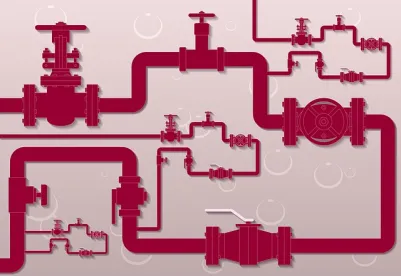The DC Circuit has found that the Federal Energy Regulatory Commission (FERC) adequately and reasonably explained its decision to adopt the index formula that governs pipeline rates for the 2016 to 2021 period. Oil pipeline rates are governed by an indexed ratemaking system, and each year FERC calculates the index used to set pipeline-specific rate ceilings by using a formula that captures the cost change in the oil pipeline industry. FERC reviews this formula every five years and adopted the most recent one on December 17, 2015 after a notice and comment rulemaking.
The Association of Oil Pipelines challenged the index formula for the 2016-2021 period on the grounds that FERC did not apply the same methodology used in prior index reviews. First, FERC relied solely on the middle 50% of pipeline cost-change data and did not incorporate the middle 80%. Second, FERC used Page 700 cost-of-service data to calculate the index level instead of the Form No. 6 accounting data it had used in the past.
In rejecting the association’s challenges, the US Court of Appeals for the DC Circuit ruled on November 28 that FERC adequately and reasonably explained its decision to use Page 700 cost-of-service data and the middle 50% of pipeline cost-change data. Under the arbitrary and capricious standard, the court must ensure that the agency examined the relevant data and articulated a satisfactory explanation for its action. In cases where the agency’s action is a change in position, the court must ensure that the agency acknowledged that it is changing its position and provided good reasons for the new policy. However, the agency is not required to demonstrate that the reasons for the new policy are better than the reasons for the old policy.
In this case, FERC explained that the middle 80% of pipeline cost-change data is more likely to have outlying cost change and would have skewed the index upward. It also explained that using Page 700 data better reflected changes to recoverable costs, eliminated the need to use proxies to measure capital costs and income tax costs, and would no longer commingle interstate and intrastate costs. The court found that FERC acknowledged its departure from prior index reviews, carefully addressed and considered the issues and the principal alternatives, and provided extensive explanations for its decision. The court also noted that FERC is not required to apply the same methodology as in prior index reviews.
Issues concerning ratemaking and rate increases for oil pipelines are expected to remain germane in the foreseeable future. Although the DC Circuit found that FERC’s order adopting the new index formula was not arbitrary and capricious, the methodology that FERC used departed from the one used in prior index reviews. This demonstrates FERC’s recognition that historical indexing methodologies require revisions, which is further underscored by the Advance Notice of Proposed Rulemaking that sought comments on potential revisions to FERC’s policies for evaluating oil pipeline indexed rate changes and the reporting requirements for Page 700 that has been pending at FERC since October 2016.




 />i
/>i
